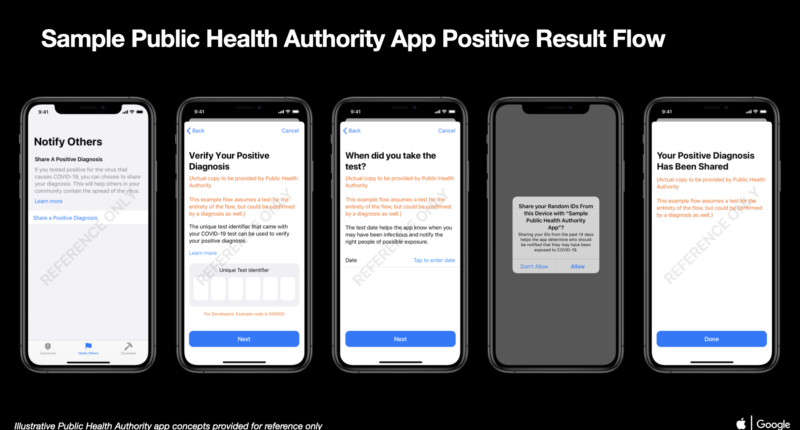Apple and Google have launched the first public version of their contact tracing API, that enables public health agencies across the world, to build apps that use ‘contact tracing’ to track the spread of coronavirus. Known as the ‘exposure notification system’, the API notifies individuals of potential exposure to those diagnosed with COVID-19, while ensuring that user privacy is preserved.
Previously called exposure notification API, the two tech giants had been releasing Beta-versions to aid development. The first public version which came out on Wednesday, can now be used by health officials in apps that are available to the general public.
To be clear, the API is not an app itself but merely a contact tracing tool. The exposure API works within mobile applications through a decentralised identifier system that uses randomly generated keys created on the device. Further, devices may use the combination of API and details submitted to an app by the user to enable authorities to contact exposed individuals.
In terms of when will the API conclude a potential exposure, those metrics have been left to be decided by the agencies themselves. Public health architectures can define what constitutes potential exposure in terms of exposed time and distance. Transmission risks and other factors can be determined according to their own standards.
An important aspect of the entire effort is to ensure privacy with most stress on the user’s location. Apps that expose the user’s location have been barred from inculcating API. Further, the tool will use Bluetooth transmission to aid tracing. Individuals that have the API-enabled app will be able to share their Bluetooth signal, logging when the radio recognises other people who have also downloaded an app that uses API.
Some governments have criticised the system claiming that it doesn’t provide adequate data to aid their contact tracing efforts, which are being conducted through in-person interviews of COVID-19 patients. Authorities are seeking to use the data to jog the memory of individuals who may not always recall their contact history. Privacy activists on the other hand, have conveyed some level of satisfaction, in context of the privacy features of the API.
Pertaining to this, most governments have been building their own contact tracing apps. India for example, was among one of the first nations globally, to roll out its own COVID-19 contact tracing app called ‘Aarogya Setu’. And the central government’s massive awareness campaigns to get people to install it, have bore fruits, with the app crossing 100 Million downloads in less than a month of release.
However, governments have encountered limitations due to restrictions set by smartphone companies that limit communication between devices.
The ‘Exposure API’ however, could emerge as a system-level feature in Google and Apple smartphones according to the tech giants’ announced plans. However this is still in the works as the two companies are in the process of determining what system-level features would be useful to the authorities.
So far, API is accessible to the United States and 22 other countries on their request. The tech giants also conducted rounds of tech talks and briefs for app developers, health officials and epidemiologists.
The Tech Portal is published by Blue Box Media Private Limited. Our investors have no influence over our reporting. Read our full Ownership and Funding Disclosure →






